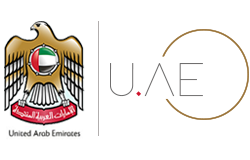Art
Music, dance, poetry, pottery, weaving and embroidery were popular forms of art in the olden days. Today, paintings and literature have joined the art forms thriving in the UAE.
Poetry
Traditional UAE's literary heritage comprises Taghrouda and Nabati poetry. Taghrouda involves a poetry duel. This art was practised in rural areas to hasten the search for a lost camel or horse. Al Taghrouda, which is popular at weddings, is also performed on horseback to urge horses to speed up. The equestrian taghrouda is usually about courage, bravery and magnanimity.
Nabati refers to the dialect of Arabic spoken by non-Arabic natives. Nabati poetry has been a feature of life in the Arabian Peninsula since the 16th century. H. H. Sheikh Mohammed bin Rashid Al Maktoum composes Nabati poetry. He has published compilations of such compositions.
Read more about Nabati poetry on the website of Abu Dhabi Culture.
Music and dance
Music and dance were widely practised in the olden days. Ayala or the 'stick dance' is one of the folk dance forms. It involves performances by two rows of dancers facing one another. Dancers are positioned close together in rows, signifying the unity and co-operation amongst tribal people. It is accompanied by drumming.
Al Wahabiyyah is one of the oldest art forms of Ras Al Khaimah and is performed only here. The songs during this performance are divided into three sections. Drum players stand between two rows of performers comprising the band. One of the performers begins by reciting a line of poetry. He repeats it a number of times until the other performers have memorised it. Then he recites another line of poetry from the same poem. The first line is a start and the second is the ostinato or pedal.
The two rows of dancers rhythmically move forward and backward, a row bows and drummers keep drawing nearer to it for 10 minutes while moving their heads. The opposite row repeats the some movements as the drummers draw nearer to them as well. Dancers with swords and guns add charm to the show.
Today, Emiratis play traditional music and perform traditional dances on important social occasions.
Crafts
Crafts such as pottery, weaving and embroidery have been part of the Emirati culture since the time they lived as bedouins. In fact, pottery can be traced back to the Paleolithic Age (6000 B.C. - 3500 B.C.). The Emirati traditional form of weaving, known as Sadu, is on the United Nations Educational, Scientific and Cultural Organization's 'List of Intangible Cultural Heritage in Need of Urgent Safeguarding'.
Paintings and literature
There are several art galleries, art districts and art museums in the cities of Abu Dhabi, Dubai and Sharjah. Today, the UAE is emerging as an international hub for promoting art and culture. The UAE is venue for several art and literature exhibitions and festivals.
Some of the renowned local art exhibitions are Abu Dhabi Art, Art Dubai and Sharjah Biennale. Literature festivals include Emirates Literature Festival, Sharjah International Book Fair and Abu Dhabi International Book Fair.
Awards
There are a number of institutions in the UAE that recognise and honour art and art forms. One of them is Sheikha Manal Young Artist Award. The award is given in the fields of fine arts, photography, multimedia, design and architecture. It gives a chance to the youth to present their works on the local and international art platforms and offers support to the artists to help them grow and develop their skills. UAE residents between the ages of 18 to 30 years are welcome to apply for the award which involves a cash prize.



